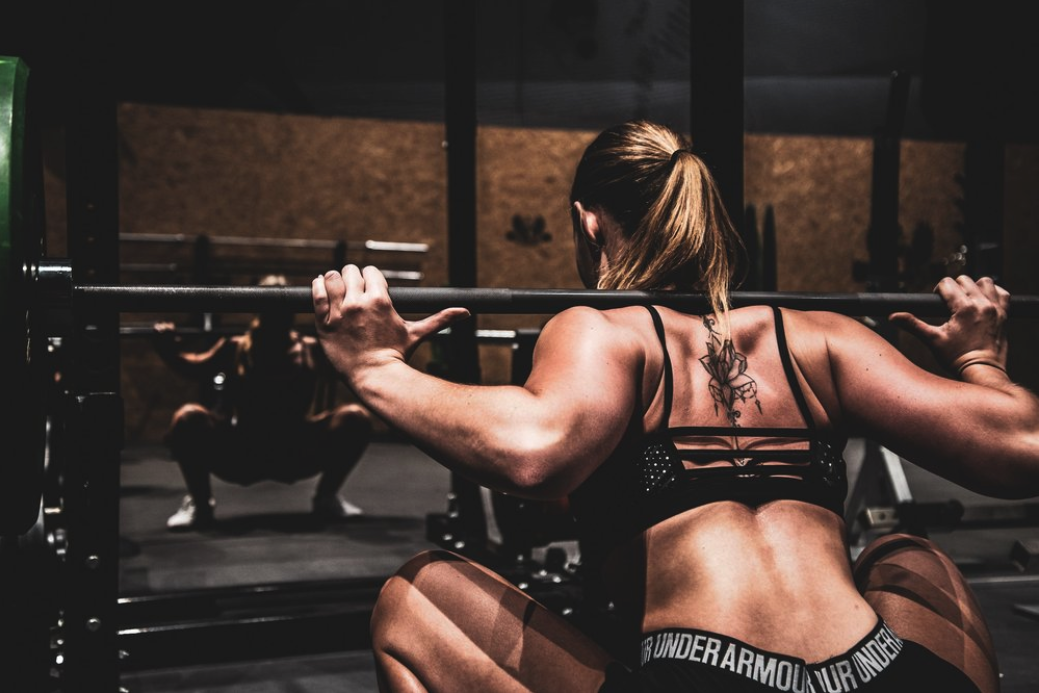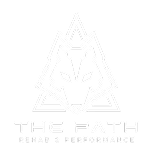Barbell Squat Variations: The What and Why?

In the vast majority of sports; whether it be Weightlifting, CrossFit, Powerlifting, or even distance running, it is extremely common to see squats included in athletes’ training programs.
Barbell squats are one of the most efficient and effective exercises to improve whole-body strength, power, performance, and resilience with athletics and life.
But what squat variations are the most appropriate for your particular goals? There are numerous squat variations that appear in a traditional strength and conditioning program, and each one can play a slightly or drastically different role in an athlete’s training program. Are you trying to strengthen your glutes? Quads? Are you trying to build whole body strength or power? Or are you trying to build more contextual strength with specific positions and movements?
Today I will be breaking down the mechanics of each of the main squat variations and how those mechanics contribute to muscular activation, strength, power, and performance.
Low bar back squat
What is it?:
The low bar back squat is a barbell variation most commonly seen in powerlifting and strength/power sports such as football. In this variation, the bar is placed slightly lower on the back of the shoulders, below the upper traps and along the spine of the scapula. While this variation may look very similar to a conventional high bar back squat, the slightly lower bar placement typically requires a more forward trunk lean than other squat variations in order to keep the bar adequately positioned on the back and within the athlete’s base of support so they don’t lose their balance. This variation is therefore considered to be more “hip dominant” than other variations, as the forward trunk lean requires more utilization of one’s hip range of motion, with less range of motion requirements being placed on the knees and ankles.
Why use it?:
Because this squat variation typically requires more forward trunk lean and hip flexion, it places more muscular demands on the posterior chain musculature, such as the hamstrings, glutes, and lumbar paraspinals. Of all the squat variations included, the low bar back squat most closely resembles the mechanics of the deadlift and therefore targets similar muscle groups. For most athletes, this muscular activation pattern can often allow for more weight to be placed on the bar. Conversely, the relatively high joint range of motion utilization of the hips and lower utilization of the knees and ankles generally make it more difficult for athletes to achieve the squat depths that they may otherwise achieve in the other squat variations.
This squat is for those looking to improve their maximum whole-body strength and power capabilities, build a stronger posterior chain, and give the knees a chance to breathe if they are angry.
High bar back squat
What is it?:
The high bar back squat is very similar to the low bar variation described above, with the only major difference being in the slightly higher bar placement on the back. In this variation, the bar is placed on top of the upper traps just at the base of the neck on top of the shoulders. This is arguably the most common form of squat seen in gyms and training rooms. With this variation, the joint angles of the trunk, hips, knees, and ankles are very similar to those of the low bar back squat, with the major difference being a slightly less forward trunk angle, less hip range of motion utilized, and slightly more knee and ankle range of motion utilized than the low bar back squat. This is because when the barbell is shelved higher on the shoulders, the athlete does not need to lean as far forward with his or her trunk in order to keep the bar in place and within the base of support. This allows for a slightly more vertical trunk, less demand on the low back and glutes, and more demand on the quads and calves.
Why use it?:
The high bar back squat is the most commonly utilized variation for a reason, as it is a highly well-rounded way to build maximum strength output and performance. This variation strikes a fine balance between hip dominance and knee dominance, and is a great way to strengthen the legs, hips, and “core” in a more balanced fashion than the more hip/posterior chain dominant low bar squat or the more knee dominant variations that I will describe below. Additionally, many athletes are able to achieve greater squat depths with this variation compared to the low bar variation, which can have positive implications for knee resilience and performance with athletics. A potential downside is that athletes may find they are not able to lift as much weight with this variation compared to the low bar variation, which may be less-than-ideal for powerlifters or football players looking to increase their absolute strength.
Front Squat
What is it?:
The front squat involves athletes “racking” the bar on the fronts of their shoulders just above the collar bones and is more commonly seen in sports such as CrossFit and Weightlifting where a strong front rack and vertical torso are basic requirements for high level performance. In this variation, the athlete’s torso will be much more vertical than in the previous variations in order to allow the bar to stay balanced on the tops of the collarbones. In order to achieve adequate depth, the athlete must utilize much more range of motion and stability in the knees and ankles, with less range of motion coming from the hips and a forward trunk lean. This knee dominant squat places less demand on the posterior chain structures like the hamstrings, glutes, and lumbar paraspinals, and more on the quads and calves. Additionally, the front squat places much more demand on the thoracic (upper back) paraspinals and the stabilizing muscles of the shoulder blade and shoulder due to the nature of the front rack position, where the athlete must engage these muscles isometrically to prevent any relative dropping of the bar.
Why use it?:
This squat variation is a great tool for those looking to shift focus to strengthening their legs, particularly the quads and calves, without relying heavily on the glutes and low back. While lifters will likely not be able to lift as much weight with this variation compared to the back squat variants, the benefits in quad strength can have significantly positive implications with knee health, performance, and longevity. It can also be a better training method for certain athletes such as CrossFitters, Olympic Lifters, and jumping athletes due to the specificity of the movement to those respective sports as well as the shoulder stability benefits that are imparted by the front rack position.
The front squat can additionally be a great tool in rehab for those who experience back pain with forward bending/leaning or are recovering from a hamstring injury.
Overhead squat
What is it?:
The overhead squat is an interesting variation, as most individuals are not able to lift nearly as much weight with this variation compared to the above squat variants. The overhead squat is constrained by an athlete’s skill with the movement, overhead stability and strength, and range of motion. This variation is therefore typically used more as a tool to address various factors simultaneously without being the “best” exercise for any one of those factors.
In the overhead squat, the torso angle is generally similar to if not more vertical than the front squat, as the overhead bar placement does not necessitate much if any forward trunk lean for balance purposes. This places much greater emphasis on utilizing the range of motion of the knees and ankles in order to achieve adequate depth. Similar to the front squat, this is another knee dominant variation that places more demand on the quads and calves than it does the posterior chain. Additionally, it places significant demand on the shoulder, scapular, thoracic, and trunk stabilizers due to the overhead placement of the bar.
Why use it?:
The overhead squat is a more nuanced exercise than the previous variations mentioned. It is less helpful for building whole-body strength, as the overhead placement of the bar allows for more “force leakages” between the bar and the floor, resulting in a less efficient lift for overall force production.
It can, however, provide a valuable accessory tool for athletes who find themselves in similar positions in their sports, such as CrossFit athletes, Olympic Lifters, and even overhead athletes such as gymnasts and baseball players who encounter significant shoulder demands in their sports. It can be a great tool to build a solid foundation for these sports, and additionally can be another tool in the toolbox to improve quad strength, calf strength, overhead stability, and whole-body coordination.
The bottom line
The bottom line is, there are no bad squat variations. The main question to ask prior to picking a variation is: “what is my goal in performing this exercise?” Is your goal to put as much weight on the bar as possible? Is it to become as strong as possible? Is it to increase the strength of certain muscle groups, such as the posterior chain or quads? Is it to build knee resilience or hip resilience? Is it to increase performance in the sport? Is it to rehab an injury?
Luckily when it comes to strength training, one doesn’t necessarily have to choose between one or the other in order to hit the above goals. It is entirely possible to focus on several of these squat variations, either simultaneously or sequentially over time, in order to become a well-rounded and healthy athlete.
Dr. Brooks Kenderdine PT, DPT, CSCS, USAW-1
Co-owner | The PATH Rehab & Performance
Sign up for our newsletter
Join our community and receive exclusive physical therapy insights, training strategies, and recovery techniques tailored for active people.
